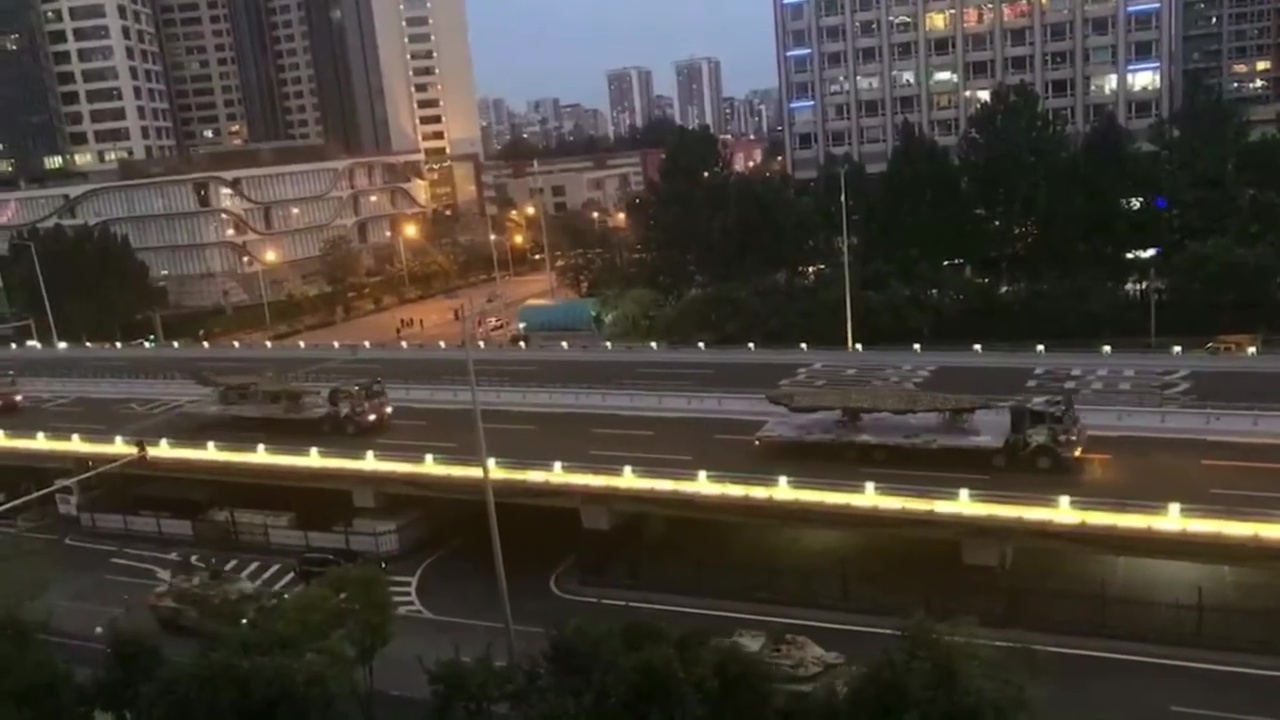FighterJock
ACCESS: Above Top Secret
- Joined
- 29 October 2007
- Messages
- 5,609
- Reaction score
- 5,941
Is there any information about the new supersonic drone at the top of the photo Deino? Any idea as to the name is.

Regarding the new high speed drone, here’s an article of speculation. Yes I know it’s from that site some frown upon here.

China Appears Set To Unveil Very High-Speed Drone During Big Military Parade In Beijing
The drone is similar to ones that have been spotted in satellite images in recent years, which could indicate it is approaching an operational state.www.thedrive.com
Its time to USAF to show their toys too ...
Or maybe it's air launched (hence the flatbed truck, and it does have lugs on top) and the rockets boost it to high speed-altitude and it glides the rest?I think this project was initially said to be a testbed for high speed, hypersonic engines. This looks more like an aerodynamic testbed using off the shelf rocket engines to me. Maybe the scramjets / turboramjets are coming later

Its time to USAF to show their toys too ...
They don't have any.
So it's essentially the X-34?
Randy

 www.eastpendulum.com
www.eastpendulum.com
Thx.This article from 2017 was posted on Chinese forums as possibly related. Apparently its about rocket powered UAVs, and says prior to the paper being published, the rocket drone had been tested (or experimentally performed) 18 times. With no power system failure, and only one camera failure occurred.
The gear also reads to me as a strike against the "Targeting Carrier Groups" theory, unless the idea is to fly around to the east of the carrier and launch toward the mainland.I don't understand also why it has a landing gear. If this has only two rocket engines, the return weight will be fairly low given the size of the thing. A parachute recovery or even skids would seems more suited.


who told that they are regular flight equipment? may be only used for transportationIt looks super sleek, but it's got two huge lugs poking out the top ---
It looks super sleek, but it's got two huge lugs poking out the top ---
Yeah, you'd think they would at least align them with line of flight.
Might be on explosive bolts tho...
who told that they are regular flight equipment? may be only used for transportation
China was putting their best foot forward to impress everyone. If those lugs could be unscrewed in 5 minutes, they would have been.
The invention discloses a high-altitude high-speed unmanned aerial vehicle landing and grounding state control method. The invention aims to provide a safer and more reliable control method. The control method of the invention is realized by following technical schemes: a high-altitude high-speed autonomous take-off and landing type unmanned aerial vehicle landing control system acquires the information of a differential GPS, and the altitude values and validity signals of an inertial navigation GPS, an atmospheric engine A, an atmospheric engine B, a radio altimeter A and a radio altimeter through a flight control computer, judges whether a certain device malfunctions, sets altitude information and valid bit information if the device malfunctions; whether one altitude source is valid is judged according to the altitude values and validity signals of the difference GPS and the inertial GPS, and if the altitude source is valid, whether the altitude source is within an altitude thresholdis judged, if the altitude source is within the altitude threshold, left main landing wheel load sensor and right main landing wheel load sensor signals are collected for 5 consecutive beats; and whether wheel load is real for 5 consecutive beats is judged, and if the wheel load is real for 5 consecutive beats, a landing and grounding state flag is set, and ground measurement and control system station commands are collected, and landing and grounding state operation is performed.
LoL they are talking about debouncing the landing gear sensors. Its what we do in engineering to detect real and fake button presses. But they are leaving out the amount of time interval for the 5 bounces.
China was putting their best foot forward to impress everyone. If those lugs could be unscrewed in 5 minutes, they would have been.
China was putting their best foot forward to impress everyone. If those lugs could be unscrewed in 5 minutes, they would have been.
Unless the message they wanted to send was, "we're launching these from a plane".
China was putting their best foot forward to impress everyone. If those lugs could be unscrewed in 5 minutes, they would have been.
Unless the message they wanted to send was, "we're launching these from a plane".
I think that launching drones from a plane is a bad idea, look at what happened to the M21-D21 when the USAF tried to launch the D-21 from the mothership it crashed causing the death's of the two crew members.
